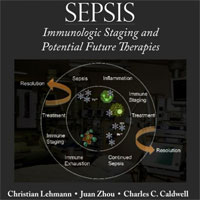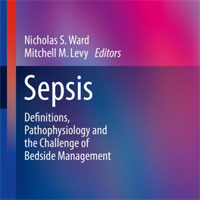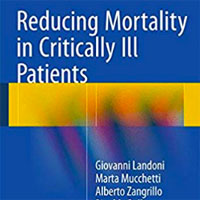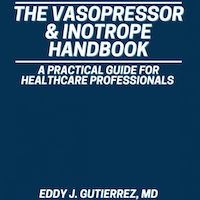Tag: septic shock
Delay Within the 3-Hour Surviving Sepsis Campaign Guideline on Mortality for Patients With Severe Sepsis and Septic Shock
The guideline recommendations showed that shorter delays indicates better outcomes. There was no evidence that 3 hours is safe; even very short delays adversely impact outcomes. Findings demonstrated a new approach to incorporate... read more
FDA Approves Angiotensin-II for Septic Shock
The FDA approved angiotensin-II (Giapreza) as a new intravenous vasopressor for septic shock and other forms of distributive shock. The first new FDA-approved vasopressor in decades, angiotensin-II could significantly change... read more
Hypovitaminosis C and vitamin C deficiency in critically ill patients despite recommended enteral and parenteral intakes
Critically ill patients have low vitamin C concentrations despite receiving standard ICU nutrition. Septic shock patients have significantly depleted vitamin C levels compared with non-septic patients, likely resulting from... read more
The Septic Shock 3.0 Definition and Trials
Ranjit Deshpande, MD, speaks with James A. Russell, MD, about the article, "The Septic Shock 3.0 Definition and Trials: A Vasopressin and Septic Shock Trial Experience," published in the June 2017 issue of Critical Care Medicine.... read more
The Timing of Early Antibiotics and Hospital Mortality in Sepsis
Prior sepsis studies evaluating antibiotic timing have shown mixed results. Objective: To evaluate the association between antibiotic timing and mortality among sepsis patients receiving antibiotics within 6 hours of emergency... read more
Long-term outcomes in patients with septic shock transfused at a lower versus a higher haemoglobin threshold
Long-term mortality rates and HRQoL did not differ in patients with septic shock and anaemia who were transfused at a haemoglobin threshold of 7 g/dl versus a threshold of 9 g/dl. We may reject a more than 3 % increased hazard... read more
Platelets and Multi-Organ Failure in Sepsis
Platelets have received increasing attention for their role in the pathophysiology of infectious disease, inflammation, and immunity. In sepsis, a low platelet count is a well-known biomarker for disease severity and more... read more
A Better Way to Detect Sepsis in Kids in the ED
We have been interested in this question for a long time here at CHOP and have done several interventions over the past several years to try to improve our ability to recognize children with septic shock. When we started... read more
Cellular Immunotherapy for Septic Shock
The infusion of freshly cultured allogenic bone marrow derived MSCs into participants with septic shock up to a dose of 3 million cells per kg (250 million cells) appears safe. Ages of participants in the interventional versus... read more
Sepsis National Hospital Inpatient Quality Measure
The Center for Medicare and Medicaid Services adopted the Early Management Bundle, Severe Sepsis/Septic Shock (SEP-1) performance measure to the Hospital Inpatient Quality Reporting Program in July 2015 to help address the... read more
Septic shock with no diagnosis at 24 hours: a pragmatic multicenter prospective cohort study
The lack of a patent source of infection after 24 hours of management of shock considered septic is a common and disturbing scenario. A multicenter observational cohort study in ten intensive care units (ICU) in France.... read more
Restricting volumes of resuscitation fluid in adults with septic shock after initial management
A protocol restricting resuscitation fluid successfully reduced volumes of resuscitation fluid compared with a standard care protocol in adult ICU patients with septic shock.... read more
Noninvasive Ventilation in Patients With Hematologic Malignancy
Two-thirds of patients with Hematologic Malignancy and respiratory failure failed Noninvasive Ventilation (NIV) and required endotracheal intubation, and had high subsequent mortality. Patients who failed NIV had higher Paco2,... read more
The Lactate Dilemma
After a long and exhausting discussion with an inferior human being, a cardiologist, which happens to be an old friend, I decided to write some thoughts about lactate. So, I'll do like I do in my lectures, which is state... read more
Selepressin – An Effective Substitute for Norepinephrine
Selepressin, a novel selective vasopressin V1A agonist, is an effective substitute for norepinephrine in a phase IIa randomized, placebo-controlled trial in septic shock patients. Vasopressin is widely used for vasopressor... read more
Muscle Oxygenation as Indicator of Shock Severity
The aim of this pilot study was to evaluate the potential of a new noninvasive optical measurement of muscle oxygenation (MOx) to identify shock severity in patients with suspected sepsis. We demonstrate that noninvasive... read more
Effects of Polymyxin B Hemoperfusion on Mortality in Patients With Severe Sepsis and Septic Shock
Several studies have reported a survival benefit for polymyxin B hemoperfusion treatment in patients with severe sepsis and septic shock. However, recently, a propensity-matched analysis and a randomized controlled trial... read more
Clinical Experience With IV Angiotensin II Administration
Angiotensin II is an endogenous hormone with vasopressor and endocrine activities. This is a systematic review of the safety of IV angiotensin II. Adverse events associated with angiotensin II were infrequent; however, exacerbation... read more
Optimal Timing of RRT in Patients with AKI in the Context of Sepsis
Among 620 patients enrolled in AKIKI, 494 (80%) had sepsis and 413 (67%) septic shock. This can help to suggest recommendations in septic patients with AKI. AKIKI showed no significant difference in mortality between early... read more
Detecting impaired myocardial relaxation in sepsis with a novel tissue Doppler parameter
Left ventricular diastolic dysfunction is associated with mortality outcomes in severe sepsis and septic shock. There are ongoing issues with diagnosing diastolic dysfunction in this cohort, partly owing to the poor applicability... read more
Resuscitating Sepsis – How I do it after Albios
Watch "Resuscitating Sepsis - How I do it after Albios" by Luciano Gattinoni.... read more
Evaluating Transfusion Strategies
Cancer patients are at increased risk of septic shock. Therefore, Bergamin et al set out to assess whether a restrictive strategy of red blood cell (RBC) transfusion reduces 28-day mortality when compared with a liberal strategy... read more









